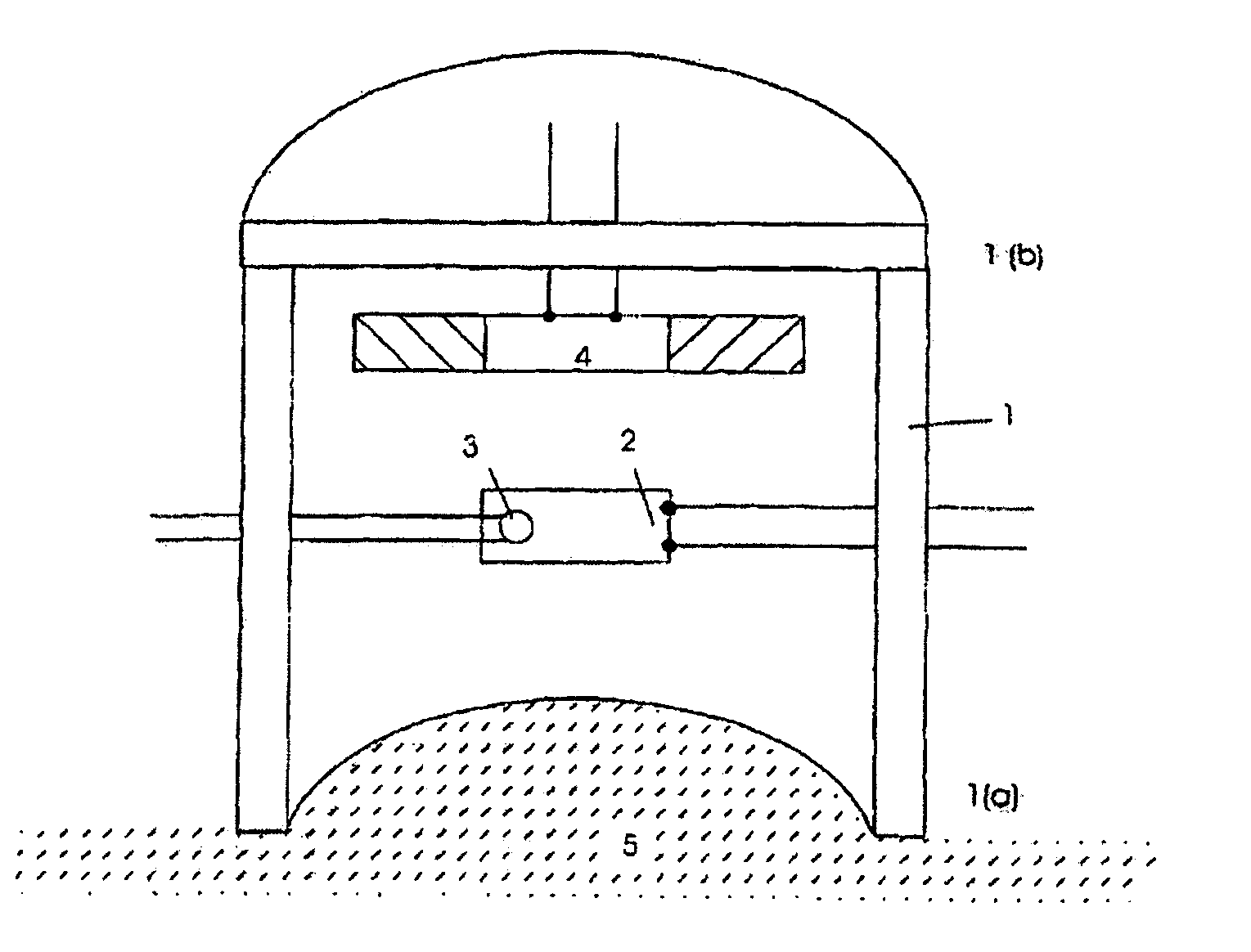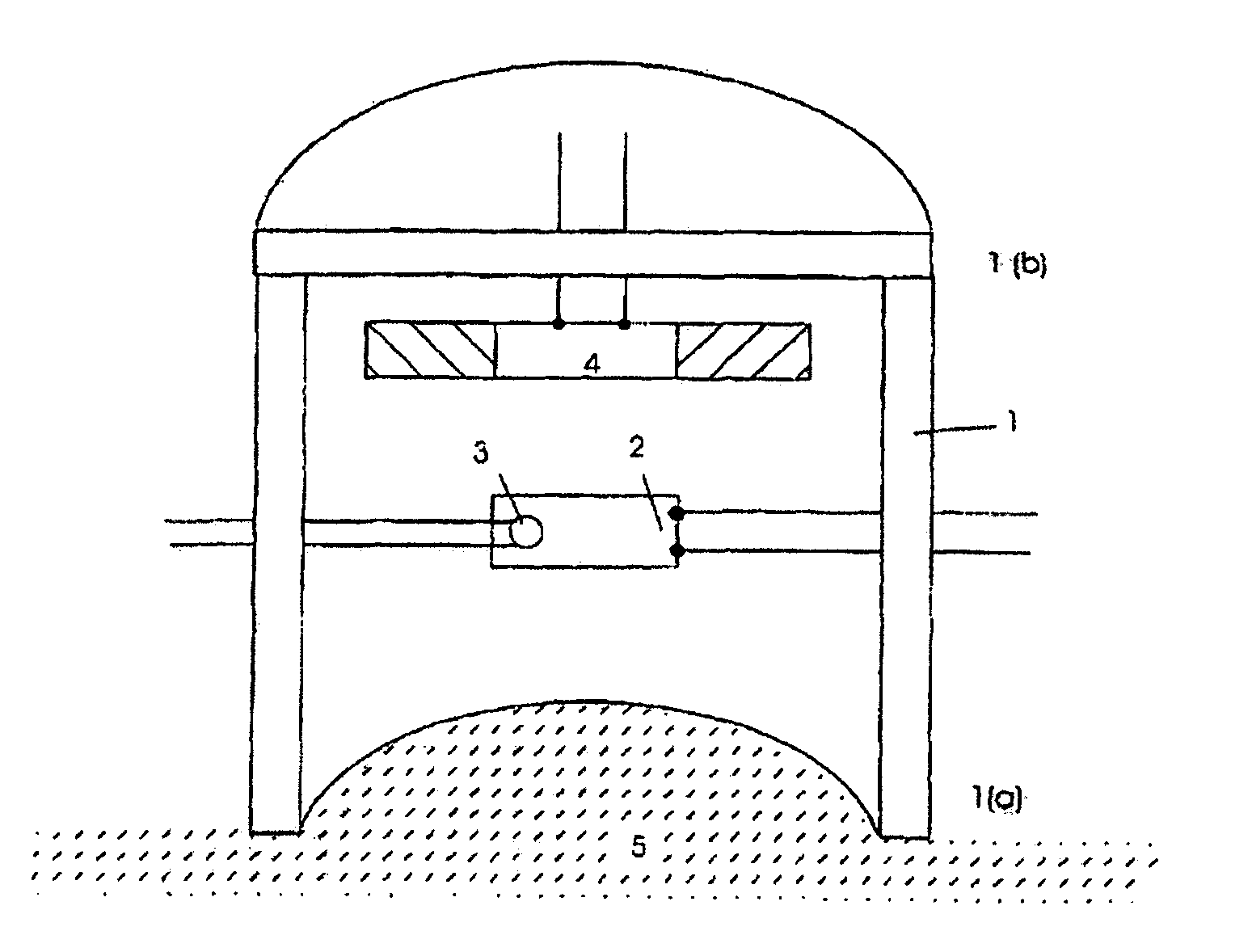Method for measuring the rate of transepidermal water loss
a transepidermal water and water loss technology, applied in the direction of sensors, diagnostics, withdrawing sample devices, etc., can solve the problems of inefficiency for this purpose, incongruity of vapour composition in the measurement chamber, and the same instrument can give a range of readings, so as to save the time of volunteers, the effect of purging quickly and efficiently
- Summary
- Abstract
- Description
- Claims
- Application Information
AI Technical Summary
Benefits of technology
Problems solved by technology
Method used
Image
Examples
Embodiment Construction
[0050]Referring to the drawing there is shown a measurement chamber 1 in the form of a hollow cylinder which has an open end 1a and a closed end 1b. The prototype measurement chamber 1 was made from PTFE and had an internal diameter of approximately 6 mm and an overall internal height of approximately 10 mm. However, it is anticipated that measurement chambers will typically have an internal diameter from 5 to 15 mm and an overall internal height of from 10 to 30 mm. It is also anticipated that the measurement chamber 1 could be made from any dense plastics or other material that does not absorb or adsorb significant quantities of water and which does not irritate the skin on contact therewith.
[0051]Inside the measurement chamber 1 are a capacitative relative humidity sensor 2 and a thermistor 3 that measure the relative humidity and temperature respectively at substantially the same location. The sensors could also have been located in the curved wall of the cylindrical measurement...
PUM
 Login to View More
Login to View More Abstract
Description
Claims
Application Information
 Login to View More
Login to View More - R&D
- Intellectual Property
- Life Sciences
- Materials
- Tech Scout
- Unparalleled Data Quality
- Higher Quality Content
- 60% Fewer Hallucinations
Browse by: Latest US Patents, China's latest patents, Technical Efficacy Thesaurus, Application Domain, Technology Topic, Popular Technical Reports.
© 2025 PatSnap. All rights reserved.Legal|Privacy policy|Modern Slavery Act Transparency Statement|Sitemap|About US| Contact US: help@patsnap.com



